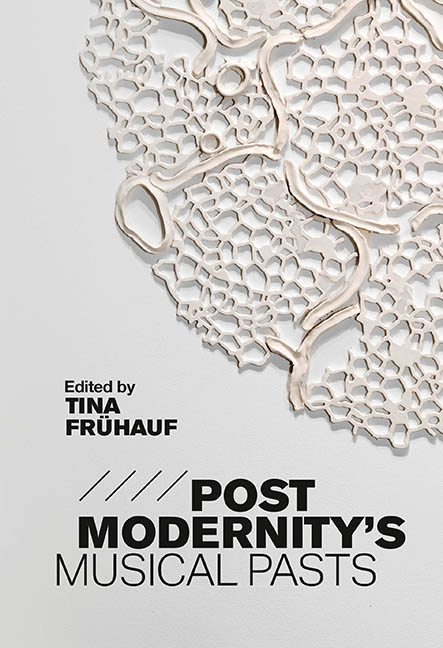Book contents
- Frontmatter
- Dedication
- Contents
- List of Illustrations
- List of Music Examples
- List of Contributors
- Acknowledgments
- About the Cover
- Introduction
- Part I Time and the (Post)Modern
- Part II Manifestations of History
- Part III Receptions of the Past
- Part IV Nostalgias and the Temporalities of Belonging
- Bibliography
- Index
7 - From Bach to Neruda: Historicity and Heterogeneous Temporality in the Chilean Cantata (1941–1969)
Published online by Cambridge University Press: 28 April 2020
- Frontmatter
- Dedication
- Contents
- List of Illustrations
- List of Music Examples
- List of Contributors
- Acknowledgments
- About the Cover
- Introduction
- Part I Time and the (Post)Modern
- Part II Manifestations of History
- Part III Receptions of the Past
- Part IV Nostalgias and the Temporalities of Belonging
- Bibliography
- Index
Summary
Senoras y senores, venimos a contar, aquello que la historia no quiere recordar.
The opening line of one of the most famous works of the Nueva Canción Chilena movement—Luis Advis's Santa María de Iquique: Cantata popular (1969/70)—announces through a male choir in unison that the eighteenpart cantata is going to share a hitherto secret story, one that history does not want to remember: the mass murder of mine workers at the Santa María school in the city of Iquique in northern Chile in 1907. In line with German Baroque form, which served as a model for the Chilean cantata, the work alternates movements for soloists, choir (sometimes divided into two groups), and instruments. Advis himself asserts in the liner notes of the first recording, which made the cantata internationally famous, that he maintained the ‘general features of a classical cantata’, but with Latin-American melodies, rhythms, and instruments; violoncello and double bass serve as basso continuo in an ensemble that features two quenas, two guitars, charango, and a bombo. Rhythmically spoken narratives replace recitatives. Homophonic sections featuring popular song alternate with imitative processes in the instrumental sections. Typical for Advis's style, the cantata features a vocal polyphony consisting of two or three lines, in which soloists and choirs simultaneously present different texts and contrasting musical expressions. Overall the work blends art and popular music, though it does not absorb the postmodernist aesthetics coming of age in other parts of the world.
Santa María de Iquique is generally appreciated as the first Chilean popular cantata and was crucial for the further development of this genre, which blossomed during the years of Salvador Allende's socialist government, the Unidad Popular (1970–3), as well as after the military coup of 1973 in Chile and in exile. One of the key themes of Chilean popular cantatas is the narration of Latin American and Chilean history, in which episodes of repression and social inequality feature prominently. In line with the leftist politics dominant at the time, popular cantatas relayed the doctrine of socialist realism and its aspiration of educating people through a comprehensible musical language. But the popular cantatas did not merely share histories, they also built a bridge to music from the past or, as Advis put it, remarking on its connection with European art music, to the ‘classical cantata’.
- Type
- Chapter
- Information
- Postmodernity's Musical Pasts , pp. 138 - 167Publisher: Boydell & BrewerPrint publication year: 2020



